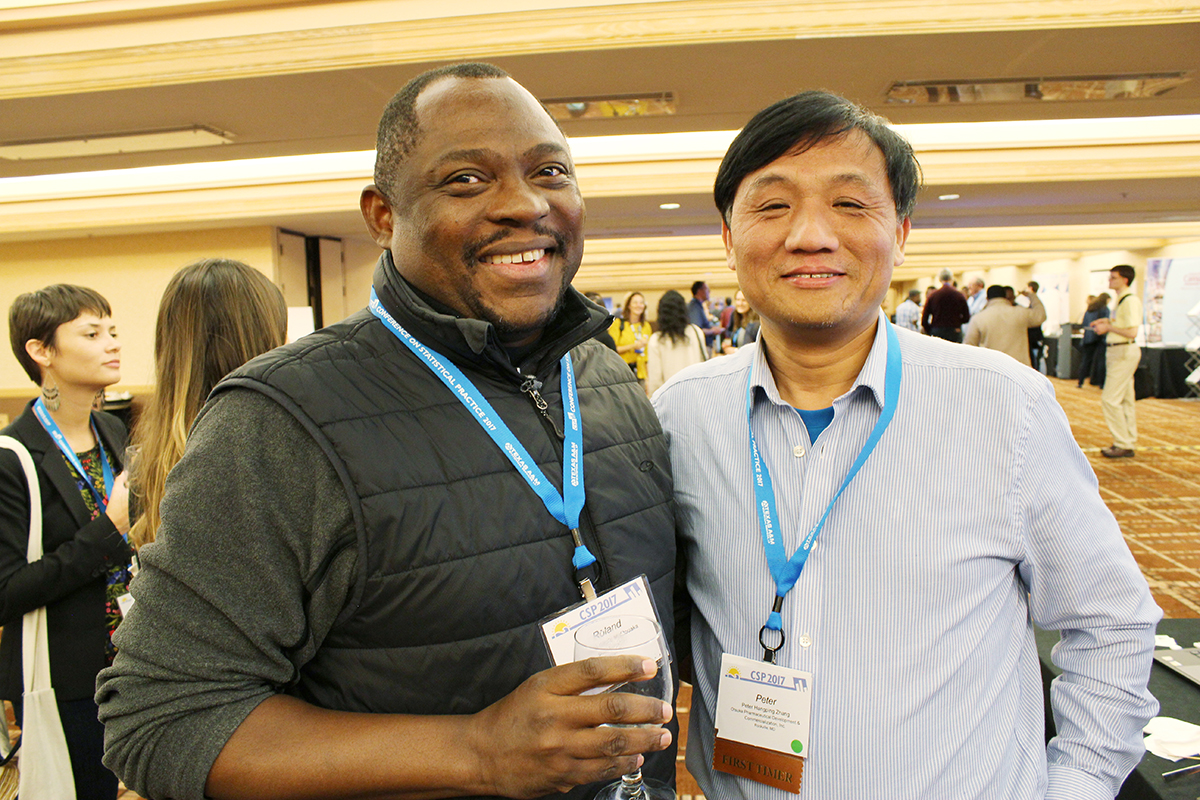Using Abstract Math to Solve Real-World Crises
Roland A. Matsouaka, Ph.D.
scholars.duke.edu/person/roland.matsouaka

Roland A. Matsouaka, Ph.D.
When I was growing up in the Republic of the Congo, HIV/AIDS was ravaging the African continent. During middle and high school, public health educators visited our schools frequently to talk about the virus, what it is, how to protect yourself and what the myths were around it. In my country we chose our academic majors while still in high school, and I chose mathematics. I remember a presentation when someone said, “We need all hands on deck to solve this problem of HIV/AIDS. Not just scientists and doctors, but mathematicians, physicists, people from every field.” That was the first time I realized that I might be able to use the abstract math I had been learning to solve a real-world health crisis.
It was not until I came to the United States after college that I learned about biostatistics. Back home, statistics was mainly applied to fields like economics, so it was a revelation to find that it was being used to understand and solve health issues. I earned my Master’s and doctoral degrees in biostatistics from Harvard University, where I studied with Professor Rebecca Betensky (now Chair of the Department of Biostatistics at New York University) and Professor Tianxi Cai. Then, I did a 2-year postdoctoral fellowship on causal inference under the tutelage of Professor Eric Tchetgen Tchetgen (now at The Wharton School of the University of Pennsylvania). Early in my Master’s program, I took many courses on HIV/AIDS, but gradually my research interests shifted toward cardiovascular disease.
I have been fortunate to have excellent mentors guiding me, because good mentors make sure your science is great. Professor Betensky treated students like her colleagues, bringing us along to meetings with senior researchers and asking us for our ideas. Sometimes I found myself thinking, “I’m only a student — please tell me what to do!” Now I see that she was preparing me for the environment I would be in after I graduated as a biostatistician immersed in the field of medicine. In my current roles at Duke University, I continue to have wonderful mentors both in the Department of Biostatistics and Bioinformatics and the Duke Clinical Research Institute.
Those experiences helped me develop what I consider the most important skill for a translational scientist: to be able to work in a collaborative environment with people from other fields. As a biostatistician, having this skill is not a choice. You have to work with doctors and scientists to solve problems. You must communicate across disciplinary boundaries, earn trust and learn to speak your colleagues’ specialized language. Over time, you discover what is important to your collaborators and understand why they work a certain way. For example, the cardiologists I work with not only have training in medicine but are informed by constant interaction with patients. Their perspective reminds me that my job is not just to write complicated equations — I also need to translate those equations into a common language that people can understand.
The support I have received from the Clinical and Translational Science Awards (CTSA) Program has enabled me to continue this translation process and take time to study cardiovascular disease in a different way. Together with my colleagues, I have developed a hierarchal approach to study the multiple outcomes we encounter in cardiovascular disease research. This approach allows us to no longer treat all outcomes or events with the same weight, whether it is hospitalization, stroke, myocardial infarction or death. Instead, we can assess outcomes along a continuum and get a more accurate picture of treatment effectiveness at different stages of care. With CTSA Program support, I have been able to present my work at conferences, meet with people from industry, confer with other biostatisticians using similar methods, and have three papers accepted for publication. It has been very helpful for me personally, and my colleagues and I have been able to contribute a new perspective to the cardiovascular literature.
Current Research
My methodological research focuses on nonparametric, semiparametric and causal inference methods for comparative effectiveness studies, clinical trials affected by noncompliance, not-so-perfect experiments and observational studies. My goal is to develop statistical methods that make the best use of the data collected to answer scientific questions while applying principled methods to minimize bias and ensure fair assessments. The substantive areas of application of my research include public health and biomedical and social sciences. I collaborate with clinical researchers to better understand and treat cardiovascular diseases. I am actively involved in the analyses of large registry data. I am also a member of the Duke Center for Research to Advance Healthcare Equity (REACH) Equity Measures, Methods, and Analysis Subcore. The overarching goal of the Center is to develop and test interventions that reduce racial and ethnic disparities in health by improving the quality of patient-centered care in the clinical encounter across settings, diagnoses, and stages of illness and throughout the life course. I help to ensure the conduct of rigorous, reproducible, synergistic research related to the Center’s theme and advise clinical investigators on and provide analytic and data management support for research projects conducted by the Center.


